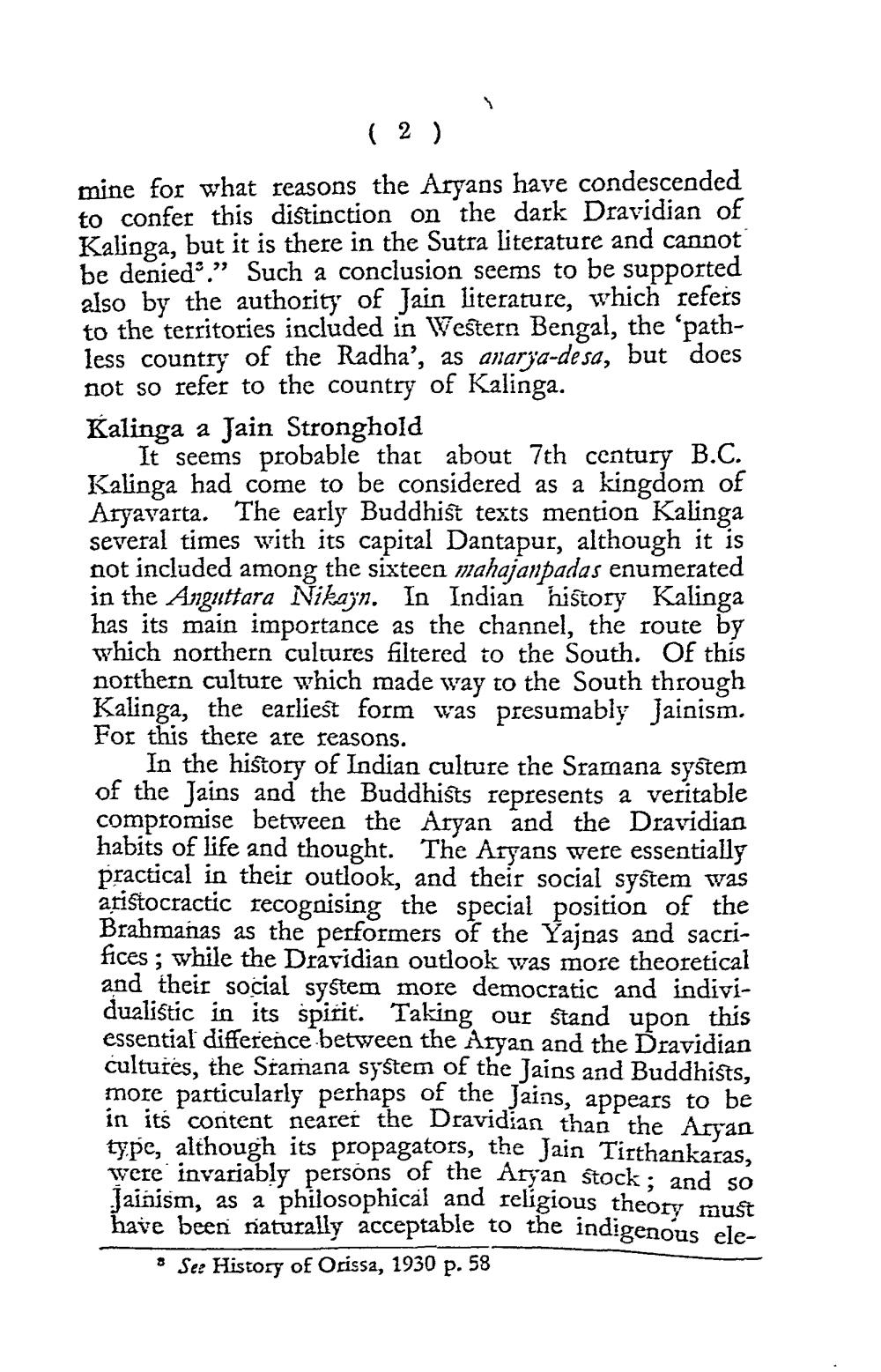Book Title: Jainism in Kalingadesa Author(s): Bool Chand Publisher: Jain Cultural Research Society View full book textPage 6
________________ 1 (2) mine for what reasons the Aryans have condescended to confer this distinction on the dark Dravidian of Kalinga, but it is there in the Sutra literature and cannot be denied." Such a conclusion seems to be supported also by the authority of Jain literature, which refers to the territories included in Western Bengal, the 'pathless country of the Radha', as anarya-desa, but does not so refer to the country of Kalinga. Kalinga a Jain Stronghold It seems probable that about 7th century B.C. Kalinga had come to be considered as a kingdom of Aryavarta. The early Buddhist texts mention Kalinga several times with its capital Dantapur, although it is not included among the sixteen mahajanpadas enumerated in the Anguttara Nikajn. In Indian history Kalinga has its main importance as the channel, the route by which northern cultures filtered to the South. Of this northern culture which made way to the South through Kalinga, the earliest form was presumably Jainism. For this there are reasons. In the history of Indian culture the Sramana system of the Jains and the Buddhists represents a veritable compromise between the Aryan and the Dravidian habits of life and thought. The Aryans were essentially practical in their outlook, and their social system was aristocractic recognising the special position of the Brahmanas as the performers of the Yajnas and sacrifices; while the Dravidian outlook was more theoretical and their social system more democratic and individualistic in its spirit. Taking our stand upon this essential difference between the Aryan and the Dravidian cultures, the Stamana system of the Jains and Buddhists, more particularly perhaps of the Jains, appears to be in its content nearer the Dravidian than the Aryan type, although its propagators, the Jain Tirthankaras, were invariably persons of the Aryan stock; and so Jainism, as a philosophical and religious theory must have been naturally acceptable to the indigenous ele See History of Orissa, 1930 p. 58Page Navigation
1 ... 4 5 6 7 8 9 10 11 12 13 14 15 16 17 18 19 20 21
